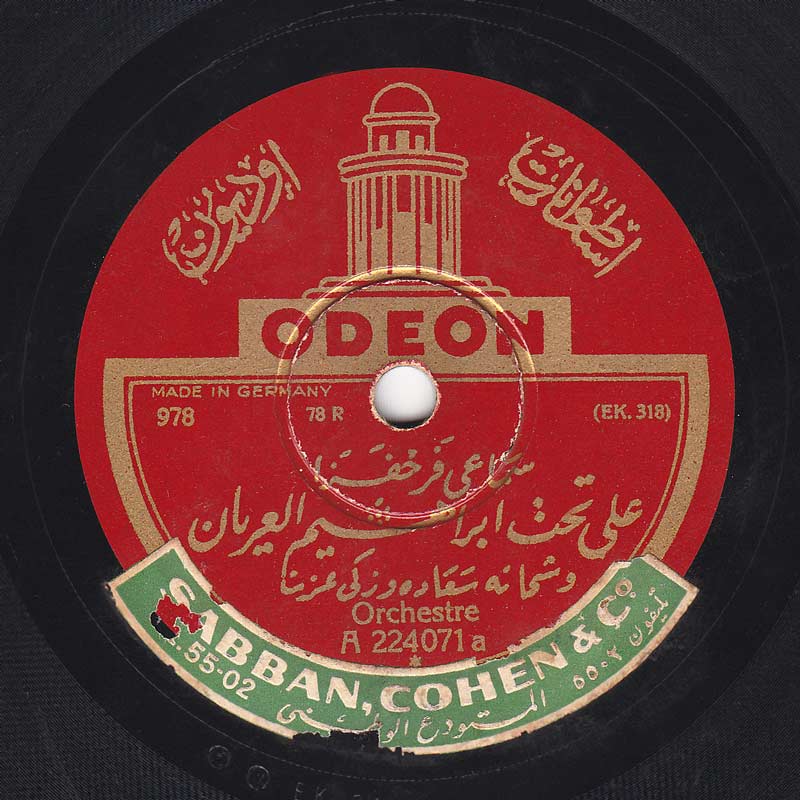Images
All images are courtesy of AMAR Foundation

search

All images are courtesy of AMAR Foundation

The Qānūn Musical Instrument 2
The Arab Music Archiving and Research Foundation (AMAR), in collaboration with the Sharjah Art Foundation (SAF), presents Durūb al-Nagham
In an interview with Ghassān Saḥḥāb, we asked:
How was the qānūn played before the ‘arabāt were added, and after that?
Before the ‘arabāt were invented, the musician would tune the qānūn according to the maqām (mode) of the waṣla whether the latter was instrumental or vocal.
For example, if the waṣla were to the rāst mode, the player would tune the instrument as follows…
If the sub-mode changes into ḥijāz for example, the musician must change the sub-mode to ḥijāz. For example, he would lower the ḥusaynī note to tik ḥiṣār, and tune up the awj to māhūr.
There are two solutions:
Before the waṣla, the musician tuned his qānūn to two rāst diwāns: the two lower diwāns were tuned to rāst, and the upper diwān was tuned to suznak i.e. rāst sub-mode and ḥijāz stem.
In this case, the musician can’t play the upper diwāns at the same time because each diwān¬ is tuned to different notes: he would then be playing discordant notes.
For example, if he played like this: …
He would be playing to the ḥusaynī on the lower diwāns, and to the tik ḥiṣār répons on the upper ones.
The other alternative was for the qānūnist to resort to thrusting (‘afq) the ḥijāz sub-modes notes on the chords that were originally tuned to play to the rāst.
For example, the notes would be tuned as follows: …
When the ‘arabāt appeared, playing the qānūn became easier: with their help, whenever the musician wants to change notes, he simply needs to change the position of the ‘araba.
I will now give an example of two consecutive notes on open chords and then on thrust chords…
I will give the same example using the ‘arabāt, i.e. playing on two open chords without resorting to the ‘afq technique…
I will now give an example of a short musical phrase using the ‘afq technique…
I will play the same phrase, changing the ‘araba…
Many musicians had mastered the qānūn before the invention of the ‘arabāt, such as the great Muḥammad Al-‘Aqqād, ‘Abd al-Ḥamīd al-Quḍḍābī and Muṣṭafa Bēk Riḍā.
The musicians who had mastered playing the qānūn using both techniques include Muḥammad Ibrāhīm, Maqṣūd Kalkajian, ‘Alī al-Rashīdī, Ibrāhīm al-‘Aryān and Muḥammad ‘Abduh Ṣāliḥ.
Muṣṭafa Riḍā, taqāsīm ṭāhir, 'His Master’s Voice' daughter company of Gramophone, around 1930, order # 7-19751, matrix # BF 26511. This recording shows modern playing techniques, and a clear Turkish influence without ‘arabāt. At this point, we need to mention that Muṣṭafa Riḍā was a contemporary of Ibrāhīm al-‘Aryān.
Note that the first did not use the ‘arabāt and the second did as in the following example.
Let us listen to a samā‘ī faraḥ fazā, composed by Jamīl Bēk al-Tambūrī, (this is not mentioned on the record), performed by Takht Ibrāhīm al-‘Aryān, recorded by Odeon around 1929, order # A 224071, matrix # EK 318. This recording highlights the use of the ‘afq technique despite the use of ‘arabāt on this qānūn.
Taqāsīm ṣabā performed by Ibrāhīm al-‘Aryān, Odeon, around 1933, order # A 224346, matrix # EK 1333. This recording shows how the ‘arabāt make playing easier: thanks to this technique, the musician can change the same note on both the bass and the treble in parallel, and go on playing on both equally.
Muḥammad ‘Abduh Ṣāliḥ, taqāsīm bayyātī to the bamb rhythm. This recording includes both playing techniques. At the time of the recording – 1960s –, the ‘afq technique’s purpose had become only aesthetical and the taqsīm muwaqqa‘ was extinct. Muḥammad ‘Abduh Ṣāliḥ is famous for his good timing as to resorting to the ‘afq technique, added to the fact that he also used the ‘arabāt to make playing the qānūn easier.
Brought to you by Ghassān Saḥḥāb
Translated by Lama Lawand.